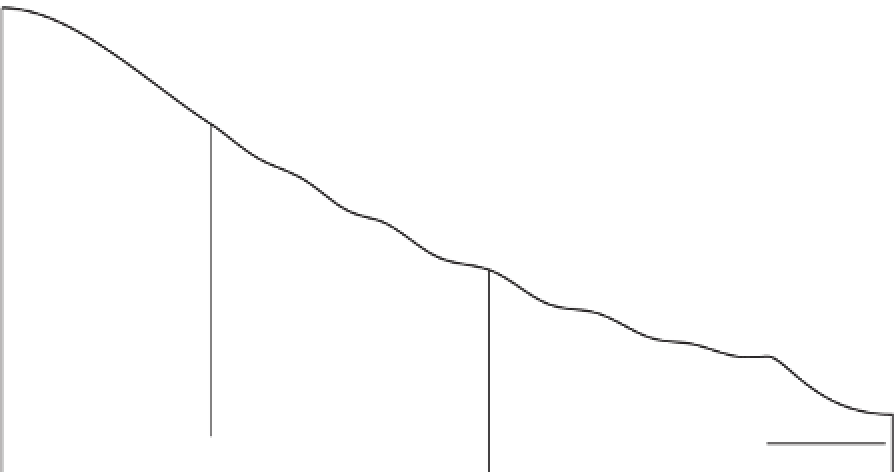Geology Reference
In-Depth Information
Precipitation
x
0
Overland flow profile
Critical distance
of overland flow
x
C
S
uspended m
aterial
Depth of overland flow
Belt of no
erosion
Depression
storage
Stream
or lake
Flow
direction
Active
erosion
Deposition
of sediment
<
r
=
r
>
r
r
Eroding stress
Shearing resistance of soil surface
Figure 3.12
Horton's model of overland flow production.
Source:
Adapted from Horton (1945)
development in humid regions is very likely to occur
where subsurface
pipes
are present. Pipe networks can
help initiate channel development, either through roof
collapse or by the concentration of runoff and erosion
downslope of pipe outlets. Piping can also be impor-
tant in semi-arid regions. Channel initiation may also
take place where slope wash and similar mass movements
dominate soil creep and creep-like processes (e.g. Smith
and Bretherton 1972; Tarboton
et al
. 1992).
deposits
,
channel margin deposits
,
overbank flood
plain deposits
, and
valley margin deposits
(Table 3.4).
When studying stream deposition, it is useful to take
the broad perspective of erosion and deposition within
drainage basins. Stream erosion and deposition take
place during flood events. As discharge increases dur-
ing a flood, so erosion rates rise and the stream bed
is scoured. As the flood abates, sediment is redeposited
over days or weeks. Nothing much then happens until
the next flood. Such
scour-and-fill cycles
shift sedi-
ment along the streambed. Scour-and-fill and channel
deposits are found in most streams. Some streams actively
accumulate sediment along much of their courses,
and many streams deposit material in broad expanses
in the lower reaches but not in their upper reaches.
Alluviation
is large-scale deposition affecting much of
a stream system. It results from fill preponderating scour
for long periods of time. As a general rule, scour and
erosion dominate upstream channels, and fill and deposi-
tion dominate downstream channels. This pattern arises
from steeper stream gradients, smaller hydraulic radii,
Fluvial deposition
Rivers may deposit material anywhere along their course,
but they mainly deposit material in valley bottoms
where gradients are low, at places where gradients change
suddenly, or where channelled flow diverges, with a
reduction in depth and velocity. The Hjulstrøm diagram
(p. 74) defines the approximate conditions under which
solid-load particles are deposited upon the stream bed.
Four types of fluvial deposit are recognized:
channel









































